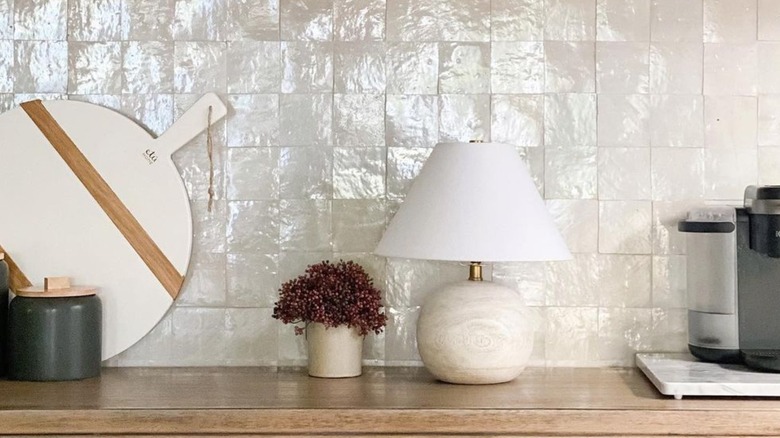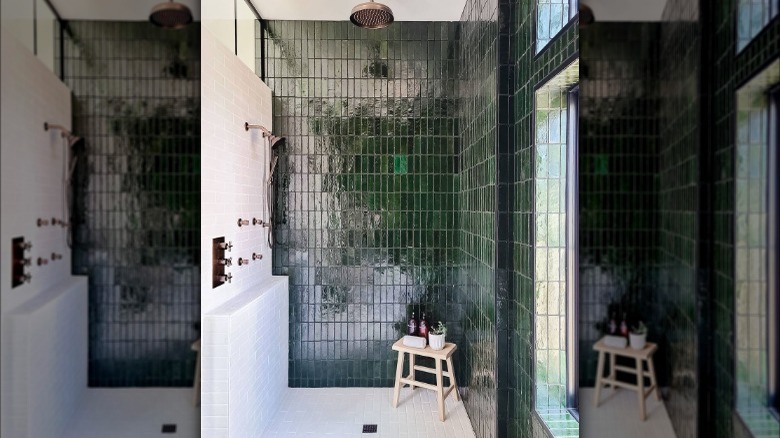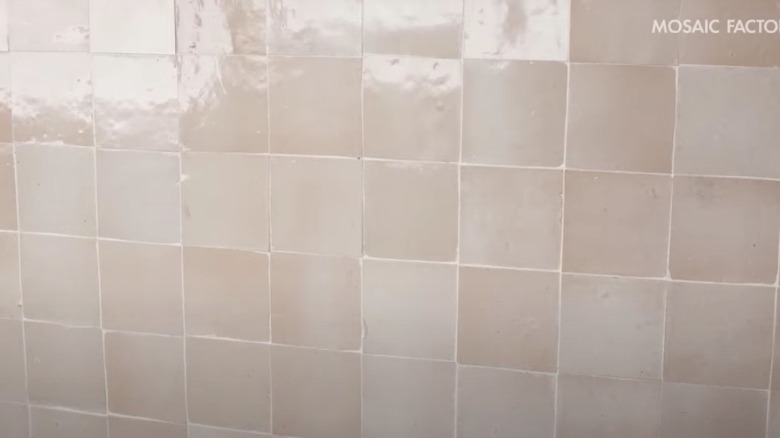What Is Zellige Tile?
New home trends always excite and zellige tiles have certainly made quite a stir in the design industry over the last year. Made with terracotta clay in Morocco (via Riad Tile), zellige tile suddenly became the décor feature to have in your bathroom or kitchen. With one look at them, it's not hard to see why. Traditional white zellige tile is sophisticated, but the handmade and uneven edges that come with them add some texture to the look. The tile achieves both a stylish and lived-in look.
Glazed clay and ceramic tile are often preferred in bathrooms and kitchens because of their low absorption rate, notes Lake Interiors. But unlike many mass produced tiles, zellige is all made by hand, so no two tiles are exactly alike. This aspect is only one of the reasons that many homeowners have fallen in love with the bespoke tile over the years. The unique process that creates zellige tile is what has thrust them into the spotlight and made them a feature sought after by homeowners.
Origins of zellige tile and how it's made
As mentioned, zellige tile originated in Morocco, and authentic tiles still come from there. Clay from the Fez region is soaked in water before being formed into tiles, explains Zia Tile. The raw clay is dried in the sun and then flattened into tile by hand. Next, colored glazes are applied before they're fired in natural wood kilns. Since they're made by hand, each tile differs slightly in texture and shape, and the heat that circulates throughout the kiln creates slight variations in the color or tone. This artform is known as Zellij.
While this style of tile has become popular in recent years, the technique and corresponding product first appeared in the 10th century, says Zellij Gallery, and grew in popularity over hundreds of years. The tiles have been used throughout Northern African, Middle Eastern, and Mediterranean regions since this time. Some zellige tiles will have brightly colored glazes or intricate geometric patterns, and many of the older tiles can still be seen throughout the region. Modern home trends seem to prefer white, neutral, or soft-colored zellige tiles, instead.
Should you use zellige tile in your home?
As with any style that rises to prominence, there's the question of whether it's a trend or here to stay. For zellige tiles, they're hugely popular right now and interior design experts don't see them becoming dated in a way that would make them go out of style anytime soon. Designer Emily Henderson writes on her blog that the zellige style has a universal appeal that gives it some staying power when it comes to home trends. Authentic, handmade zellige tile is an option for the home that will look good for years to come. Seek out the real deal rather than settling for recreations you can get from big box stores. Neutral colors will help give the tile some additional longevity, but don't be afraid to include some color.
As for where you can use it, possibilities abound. Many homeowners like the look for a kitchen backsplash or shower walls. Both of these options add plenty of texture and sometimes a bit of shine to the room. Zellige tile can be used on the floor, however, you'll want to keep in mind the uneven surfaces it will create. It can also be used as an outdoor application around water features such as pools.


